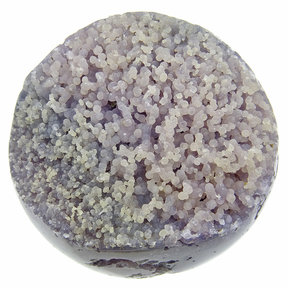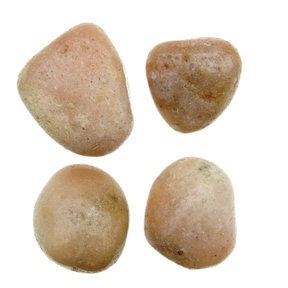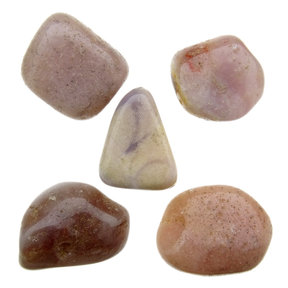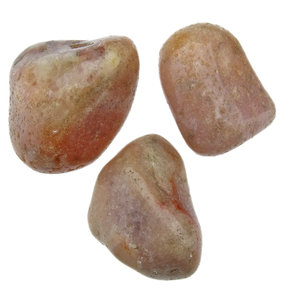Chalcedony occurs as a filling of cavities and crevices. The stone consists of fine quartz fibers that are always slightly porous and is known for its beautiful soft blue color. Read more.
Grape agate was recently discovered in Indonesia. The beautifully purple colored balls together form a bunch of grapes.
Pink amethyst tumbled stones from Brazil. The hematite compounds in the chalcedony provide the pink colour.
Pink amethyst tumbled stones from Brazil. The hematite compounds in the chalcedony provide the pink colour.
Pink amethyst tumbled stones from Brazil. The hematite compounds in the chalcedony provide the pink colour.
Pink amethyst tumbled stones from Brazil. The hematite compounds in the chalcedony provide the pink colour.
Pink amethyst tumbled stones from Brazil. The hematite compounds in the chalcedony provide the pink colour.
Pink amethyst tumbled stones from Brazil. The hematite compounds in the chalcedony provide the pink colour.
Pink amethyst tumbled stones from Brazil. The hematite compounds in the chalcedony provide the pink colour.
Pink amethyst tumbled stones from Brazil. The hematite compounds in the chalcedony provide the pink colour.
Grape agate was recently discovered in Indonesia. The beautifully purple colored balls together form a bunch of grapes.
Pink amethyst tumbled stones from Brazil. The hematite compounds in the chalcedony provide the pink colour.
Pink amethyst tumbled stones from Brazil. The hematite compounds in the chalcedony provide the pink colour.
Pink amethyst tumbled stones from Brazil. The hematite compounds in the chalcedony provide the pink colour.
Pink amethyst tumbled stones from Brazil. The hematite compounds in the chalcedony provide the pink colour.
Pink amethyst tumbled stones from Brazil. The hematite compounds in the chalcedony provide the pink colour.
Pink amethyst tumbled stones from Brazil. The hematite compounds in the chalcedony provide the pink colour.
Pink amethyst tumbled stones from Brazil. The hematite compounds in the chalcedony provide the pink colour.
Pink amethyst tumbled stones from Brazil. The hematite compounds in the chalcedony provide the pink colour.
Pink amethyst tumbled stones from Brazil. The hematite compounds in the chalcedony provide the pink colour.
Pink amethyst tumbled stones from Brazil. The hematite compounds in the chalcedony provide the pink colour.
Pink amethyst tumbled stones from Brazil. The hematite compounds in the chalcedony provide the pink colour.
Pink amethyst tumbled stones from Brazil. The hematite compounds in the chalcedony provide the pink colour.
Pink amethyst tumbled stones from Brazil. The hematite compounds in the chalcedony provide the pink colour.
Pink amethyst tumbled stones from Brazil. The hematite compounds in the chalcedony provide the pink colour.
Porous quartz fibers
Chalcedony occurs as a stuffing of cavities and crevices and often there is a crust around it. The stone consists of fine quartz fibers that are always slightly porous, chalcedony can assume various colors but is mainly known for its blue color with white stripes. Beautiful quartz crystals also occur at Chalcedony florets. Also, the well-known 'Pink amethyst' is actually a chalcedony.
Working of Chalcedony
Chalcedony has a calming effect on aggressiveness and can help with stuttering. He makes you social, optimistic, enthusiastic and promotes solidarity in groups. He also provides the mother feeling which stimulates milk production during breastfeeding.
























